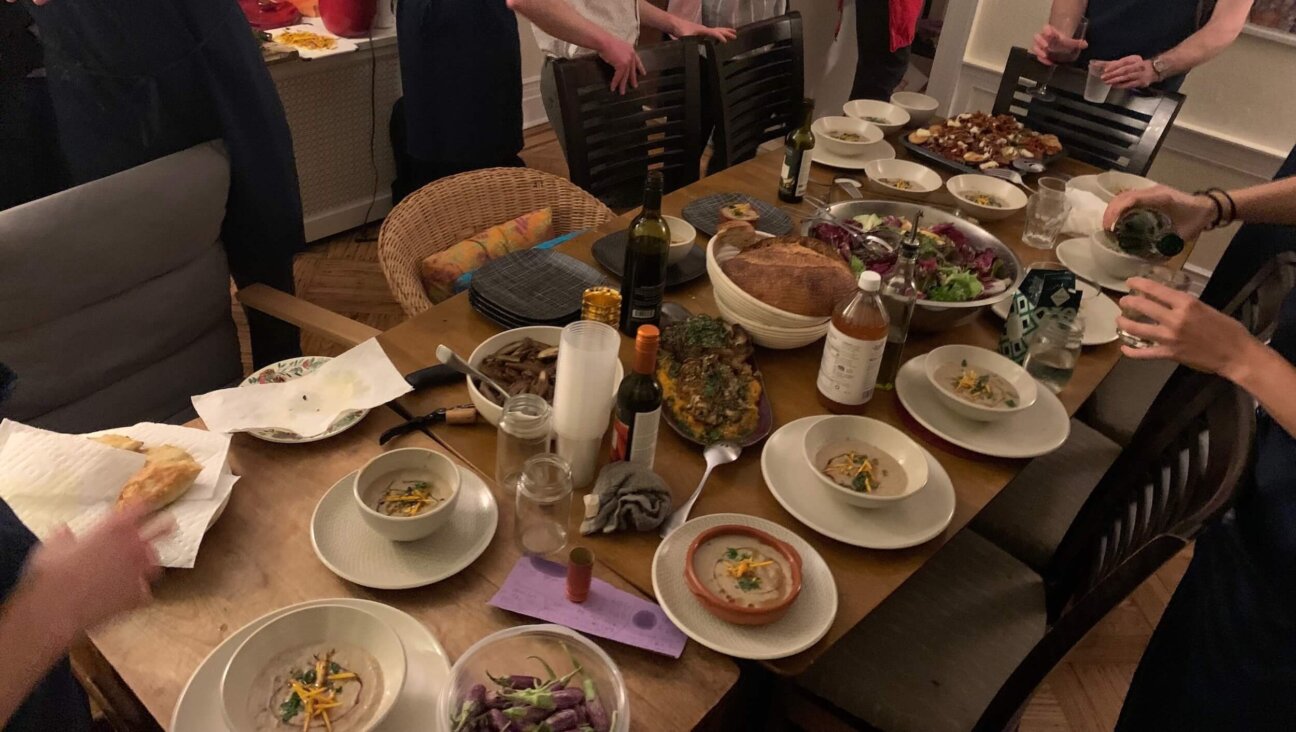The Jewish Herbal: Mallow

Mallow leaf Courtesy of Devorah Brous
“The Jewish Herbal: Mystical Reflections on Food, Nature and Urban Farming” is a regular column by Devorah Brous charting the ways we can use mystical Jewish wisdom, earth-based practices and herbal wellness to reconnect with ourselves in harmony with nature. Dev is an urban homesteader, lifecycle ritualist, and green consultant in Los Angeles. Find her her online offerings at @Dev.Brous
When I lived in Israel, Palestinians taught me to forage for mallow, to roast the seeds, and to make khubeiza with its superfood leaves.
The Israelis taught me to weed this wild, non-native plant out of vegetable gardens by digging up the extremely deep taproot.
How does this relate to your garden? Mallow is a super-versatile perennial plant (in some micro-climates it’s a biennial) that is drought-tolerant and ideal to plant right about now to ensure a supply of fresh greens throughout the upcoming Sabbatical year.
My mantra is, if we fallow – we also mallow, meaning, grow mallow in your fallow garden plot. Why? To free up your reliance upon heavy-feeding crops so you can explore regeneration and give the soil a rest with deep rooted perennials, one out of every seven years. After our Sabbatical year, choose if you want to dig out that taproot that meanwhile helps break apart compaction and oxygenates your soil.
In your kitchen, mallow is fully edible, and it’s one of my favorite plants because it’s literally a zero waste food: once properly identified and in its prime, you can eat the leaves, stems, small nut-flavored flowers, seeds, and even those beasty roots. The rest can be chopped and dropped to mulch the ground. Like many of the wild nutritious plants, often they manage to grow in a neglected landscape that could use the mulch.
At 4 a.m. when a mosquito precluded my sleep one night, I burrowed into a rabbit hole and learned that the genus name for mallow is malva (or “soft”) – and that soothing, okra-like mucilaginous texture (similar to the herbal healing properties of marshmallow root) eases pain from inflammation and scrubs out mucous membranes.
Mallow leaf, with its power-packed nutrient-punch, is a great egg-white replacement for vegans. It’s both anti-inflammatory and antioxidant — which means mallow can soothe and nourish a tender, irritated throat. And there’s more: I started exploring whether the gooey plant can help scratch the itch of inflamed mosquito bites – and sure enough in the middle of the night – it actually works.
Here’s my favorite nugget about mallow: I learned from Encyclopaedia Judaica that according to the medieval commentator Rashi (Shab. 35b), mallow leaves turn to the sun in the morning by inclining eastward, at noon the leaves are upright, and in the evening the leaves lean west. They are heliotropic, like the sun-worshipping of a sunflower. This cyclic movement of attuning to and greeting the directions (known in the Zohar as “the four winds”) seems nothing short of prayerful. My prayer over a plate of sauteed mallow is this:
May the two nations
on either side of the mallow spectrum
find ways of understanding one another.
Mallow Saute
Throughout the 49-day regenerative Omer cleanse I’m leading, this has been a delicious staple
Harvest and rinse two handfuls of fresh, green common mallow leaves (be sure to ID properly).
Add a whopping tablespoon of ghee or vegetable oil and heat in a skillet over a medium flame.
Add a yellow onion and several cloves of garlic. Saute for 2-3 minutes.
Add the mallow leaves, toss until lightly browned.
Add a pinch of Himalayan sea salt and a splash of lemon and feast on this wild nutrition to boost your antioxidants as we re-enter the world.
~All the articles in this series are for general information, and are not intended to diagnose or treat any illness. Always exercise caution when identifying any wild plants, and harvest only what you need so that weeds, also known as pioneer plants, can keep up their hard-work in restoring landscapes, and shared equitably in your community! DJB
A message from our Publisher & CEO Rachel Fishman Feddersen

I hope you appreciated this article. Before you go, I’d like to ask you to please support the Forward’s award-winning, nonprofit journalism so that we can be prepared for whatever news 2025 brings.
At a time when other newsrooms are closing or cutting back, the Forward has removed its paywall and invested additional resources to report on the ground from Israel and around the U.S. on the impact of the war, rising antisemitism and polarized discourse.
Readers like you make it all possible. Support our work by becoming a Forward Member and connect with our journalism and your community.
— Rachel Fishman Feddersen, Publisher and CEO
























